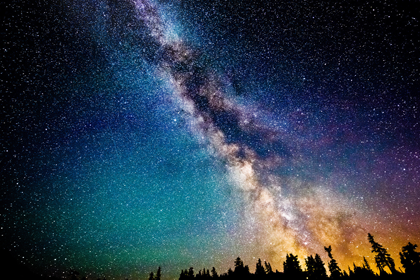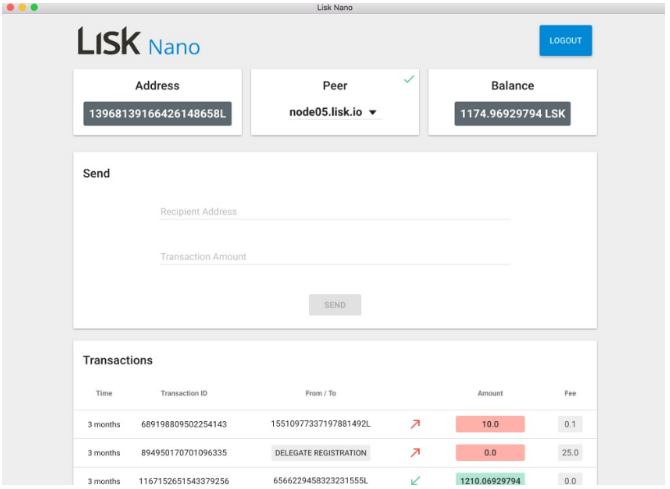Overview of decentralized crypto platforms. Part 2: Lisk
 With this post, we continue the cycle of reviews of blockchain platforms ( Part 1: Waves ), which are rarely mentioned and discussed in the Russian media, however, are widely known in narrow “cryptocurrency” circles and among enthusiasts.
With this post, we continue the cycle of reviews of blockchain platforms ( Part 1: Waves ), which are rarely mentioned and discussed in the Russian media, however, are widely known in narrow “cryptocurrency” circles and among enthusiasts.The second material of the cycle focuses on the open source Lisk blockchain platform, which by March of this year during the pre-sale of coins (ICO) managed to collect 14,009 BTC and over 80 million XCR totaling $ 5.9 million.
I decided to learn more about the functionality of this platform of decentralized applications, which gives developers the opportunity to independently participate in the project ecosystem. At the same time, the developers themselves are gradually abandoning the familiar term dapps in favor of the term “blockchain application”.
A bit of history
The Lisk project was created by Max Cordek (Max Kordek) and Olivier Beddows, former members of Crypti. In their mission, they do not hide their intentions to win back part of the market from Ethereum and become the leading dapp blockchain platform for JavaScript developers in the world. The project, by the way, has already managed to become one of the partners of the cloud service for Azure corporate developers from Microsoft.
')

The official launch of Lisk took place on May 24, 2016, as a result of which Lisk v0.3.0 was launched for public download. The success of the launch was unambiguous: the platform server could not bear the load and was unavailable for some time. Already in August of this year, the platform team presented a lightweight client to access the main functions: a Lisk Nano wallet for Windows, MacOS and Linux is installed on a computer, and with its help you can manage your own account, as well as make transactions.
The project's API is based on JavaScript, which means that the Lisk system works on the basis of open source code, as a result of which anyone can participate in the development of the platform. Decentralized Lisk applications run on sidechains (side chains), which are separated from the main Lisk block chain. Consequently, users of the platform developing such an application will be able to fully customize it for themselves.
Among the main exchanges where Lisk is traded: Poloniex, Bittrex, BloomBit, YoBit, etc.
What is the main goal of the project? Experts talk about creating applications for social networks, exchanges, forecast markets and decentralized games. This opinion was confirmed by Max Cordek, one of the founders of the platform, in his interview. He stressed that the main advantages of Lisk include not only the fact that developers can quickly begin to implement the project due to the ease of understanding the platform, but also the fact that it’s realistic to create applications with a large set of functionality (the system does not require tokens Lisk at each operation), including on the basis of the Internet of things. By the way, Lisk coins are needed for transactions only within the blockchain's main ecosystem, for adding contacts or registering user names. In general, decentralized Lisk applications work on their own as long as they are supported by the nodes.
Key features of Lisk
- All for application developers
Decentralized applications (dapps) have enormous potential: they can be used to draw up smart contracts, and to integrate into various applications. Lisk in this sense may become a kind of standard - according to the idea of the founders.
According to Max Cordek, there is not yet such a cryptoplatform that would allow developers to easily implement their own applications on the blockchain or the JavaScript blockchain. Lisk can be considered similar to WordPress templates for web designers and bloggers. You can not sacrifice quality, but create, publish, distribute and monetize applications much faster and easier. And the same functionality can be used not only for games, social networks and the Internet of things, but also for developing or expanding applications in the business segment.

- Using sidechains
Lisk offers a simple and understandable solution to the main problem of the blockchain - an oversupply of test or artificial transactions, which slows down the work of the entire network. The key is in sidechains - add-ons that can be “secured” to independent blockchains and placed with their help bulk transactions without interfering with the main blockchain. All this allows you to maintain fast speed of the entire network.
- "Modular" cryptocurrency
"The first modular cryptocurrency using sidechain" - as the founders call Lisk. “Modularity” tells us that the coin consists of modules that are responsible for the base and the design. Lisk allows anyone who uses its building blocks to create their own decentralized applications. Given the use of JavaScript, one of the most popular and universal programming languages, the platform is fully capable of achieving widespread use. Especially when compared with the "competitor" Ethereum, where applications are written in the platform's own language.
- No sooner said than done
What does a decentralized application look like? “Modularity” and the use of sidechains are what Lisk is trying to demonstrate. The project’s official website contains a list of some examples: BlockData (a prototype of a Lisk-based smart home), Criterion , a social network for Discovr artists, and a decentralized MarketPlace store.
- “Proof of Delegates” (DPoS)
Far from the very last item in the list of platform features is the Lisk consensus model. In general, each cryptocurrency based on a chain of blocks today uses a consensus-based algorithm to determine who will generate the next block. Bitcoin introduced proof of work (PoW), on the basis of which the miners must calculate the solution (hash) of the problem. Moreover, the more powerful the miner is, the faster he can find a solution. Miner, who finds the solution first, extracts, and therefore generates a block and a certain number of bitcoins with him. This means that the miner has a financial incentive to be the fastest. The NXT platform, in turn, introduced proof of ownership (PoS), eliminating the mining element from the network, thus dramatically reducing energy consumption.
Lisk, on the other hand, combines both ways: an energy-safe algorithm of proof of ownership of shares (PoS) and a competitive element of proof of work performance (PoW). In addition, Lisk adds an element of the community of elected delegates to the consensus mechanism. According to official documentation , the Lisk network is provided and / or protected by 101 active delegates. The duty of the active delegate 101 is to provide the main chain of Lisk blocks (i.e., the main chain). To provide an incentive to protect the network, the network operating costs are shared equally among the 101 active delegates. In addition, the block of inflationary remuneration (remuneration for the formation) is distributed for each creator of the block.
Formation

On the Lisk platform, the term “formation” is used, which means the generation of a block, by analogy with “mining” (mining) on Bitcoin. Everyone can begin to form, but only 101 active delegates will actually generate and receive rewards. Having entered the client's user interface, you can begin to form blocks manually, but in case of an emergency restart, the client will have to start all over again. Developers recommend running your own site for smooth operation and inserting the key phrase into the config.json file. Thus, when you start the Lisk client, the formation will be automatically enabled for all accounts whose key phrases are specified in the config.json file. In this case, the formation will continue without interruption, and after a possible reboot.
At the moment, the only important factor for shaping is waiting for an Internet connection. Most modern home connections and any cloud hosting provider are more than enough to get started. As for earnings, the total share of regular payments for a transaction depends on the volume of transactions that take place on the network in this round. Formation fee is paid at a fixed rate for each block.
In November 2016, the platform also announced plans to distribute awards for the formation of blocs among delegates. The delegate’s reward for each formed unit will be 5 LSK. According to Max Cordek, this was possible due to the fact that the development of the protocol platform has achieved significant progress and has stabilized markedly.
Total
In general, the platform Lisk from the point of view of the developer looks very attractive. On the other hand, like other altcoins, Lisk is not immune from volatility. Since this project is very new, only time will tell if it has everything necessary to become truly mainstream among JavaScript blockchain programmers.
Continue to follow the updates to the blog Web-Payment.ru and learn about the most interesting technological projects in the field of payments, fintech and blockchain.
Source: https://habr.com/ru/post/313294/
All Articles